São Paulo S/S 2012: Fashion and Design Week
With São Paulo fashion week celebrating its 15th anniversary with a whole host of stellar catwalk shows, parties and exhibitions that took place from 13-18 June - not to mention the much-feted addition of Brazil’s first-ever design week to the seasonal calendar - it’s hard to imagine that this now globally-acclaimed cultural week has had just over a mere decade to grow.
The biggest fashion week outside of Europe and America and one aimed at the domestic market, it came as no surprise that the collections were mostly retail-focused, pulling together a range of noticeable key trends for Spring. There was a great play on things like sheer billowy fabrics from
" target="_blank" > Reinaldo Lourenço and Alexandre Herchcovitch, coloured leather from Gloria Coelho, Triton’s geometrical shapes that looked back to the country’s rich architectural history, and Cavalera’s bright festival-style tribal tropical prints.
SPFW itself, of course, needs little introduction. Created in 1996 by industry bigwig Paulo Borges and now a multi-million dollar operation produced by his company Luminosidade, its bi-annual residence in the São Paulo Biennial Foundation building (otherwise known as Oscar Niemeyer’s Pavilhão Ciccillo Matarazzo) in Ibirapuera Park feeds the industry’s some 100,000 guests with a substantial fashion manna of about 50 shows each season.
Across the road from the official fashion week pavilion though, was the bubbling anticipation of a new emerging movement. Brazil’s first-ever foundling design week - launched in the Oca exhibition pavillion (yet another classic Niemeyer structure set within Ibirapuera Park) - was particularly piquing interest. The city itself doesn’t have a dedicated design gallery, making this the first official collective flex of São Paulo’s creative design muscle.
Running from 14-18 June, Design São Paulo has been pegged as an annual event that will bring together a tightly-edited selection of Brazilian design.
Founders Waldick Jatobá - a former banker and avid design art collector - Katia Avillez and Lydia Goldstein had been biding their time for four years, waiting for a ripe moment to introduce a substantial design fair to Brazil. The aim of the inaugural ’salon’ (as Jatobá prefers to call it) is that it appeals not only to design industry aficionados, but also works to educate the Brazilian public.
Receive our daily digest of inspiration, escapism and design stories from around the world direct to your inbox.
The resulting edit, with its mix of vintage mid-century modern pieces and new contemporary design pieces, looks to strike a balance. Curator Maria Helena Estrada explains, ’The pieces here reflect a reality. There is a balance between old tradition and new pieces that move forward’.
Partnered with Paulo Borges and Luminosidade, the five-day event supplemented a showcase of 20 handpicked galleries and an exhibition on the Campana brothers (also this year’s Designers of the Year) with a strong program of lectures, conferences, round-tables and workshops.
’Through the salon you can see that the thoughts, the ideas, the new big things are about to start for Brazil’ says Jatobá, ’And this is good for designers, collectors and for enthusiasts to see that this is real - that if this is abroad, then why not in Brazil’.
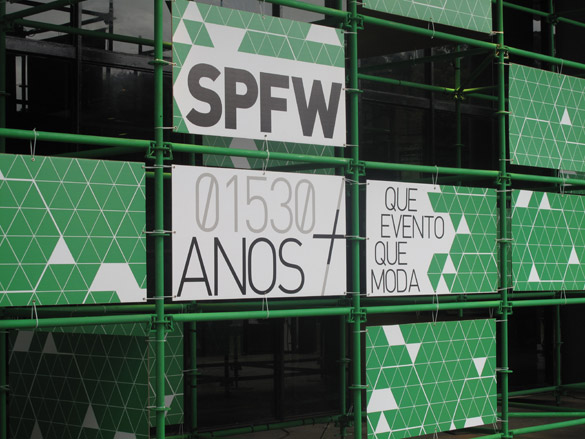
São Paulo fashion week once again returned to Ibirapuera Park...
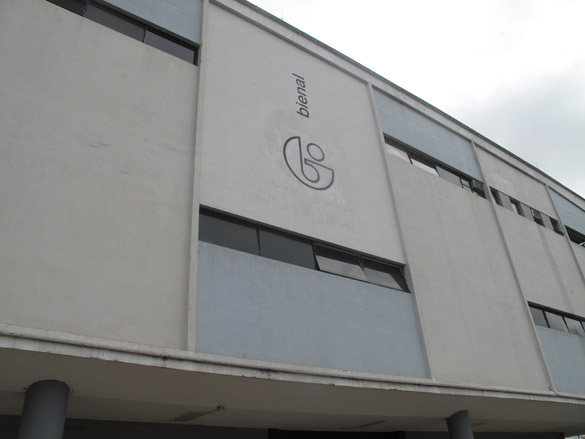
where Oscar Neimeyer’s Pavilhão Ciccillo Matarazzo became temporary home to 28 catwalk shows for A/W 2011
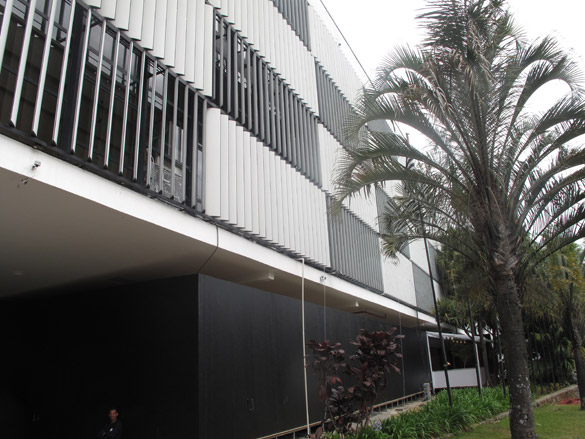
Shows took place in one of three large warehouse spaces in a rotating system throughout the week
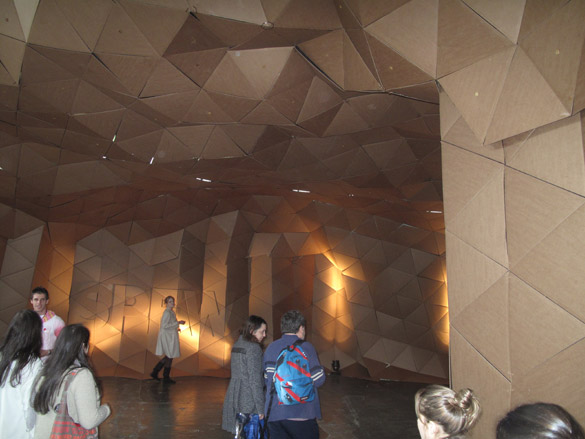
The official entrance way, framed by a structure built from geometrically-arranged sustainable cardboard
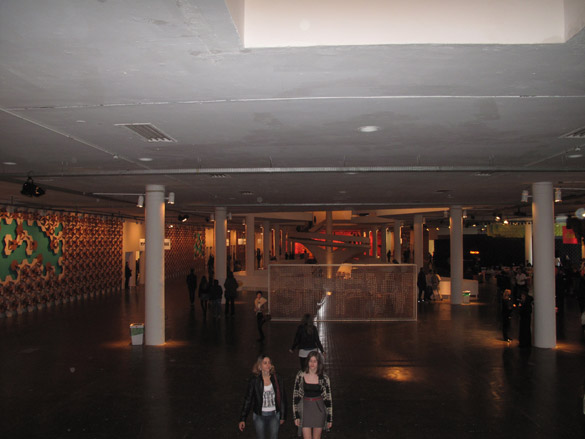
One of the four expansive floors in the official fashion week biennial building
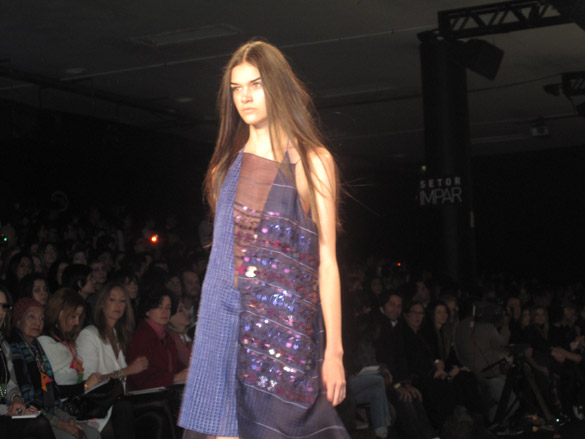
Animale
Having kicked things off with a throbbing rendition of Robert Palmer’s Addicted to Love, it soon became clear Animale’s overriding Spring message was purple - a full tonal assault of indigo, grape, violet, mauve and eggplant in fact. Things took a breath mid-way, with a series of white outfits and a royal blue number in the form of a leather jacket breaking the the mold. This season, the label emphasised its dedication to the feminine with a discourse on the skirt, where cut and silhouette were manipulated with the use of sheer silks and ethereal colour-treated fabrics, creating a fluidity in effect
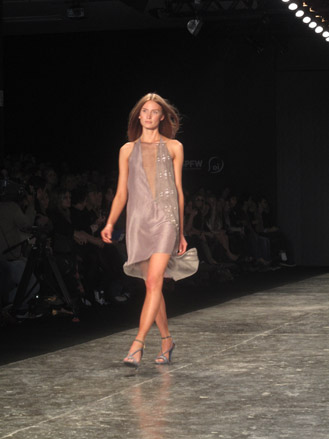
Animale
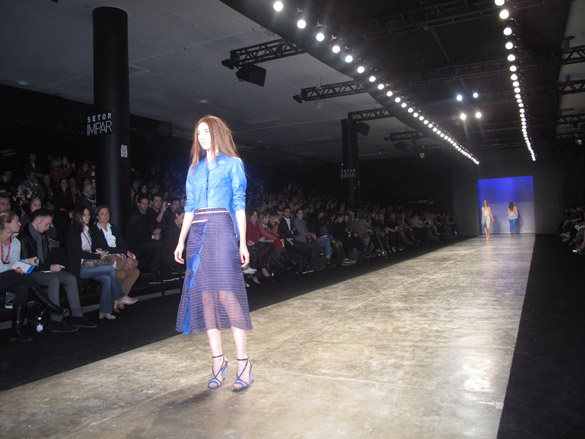
Animale
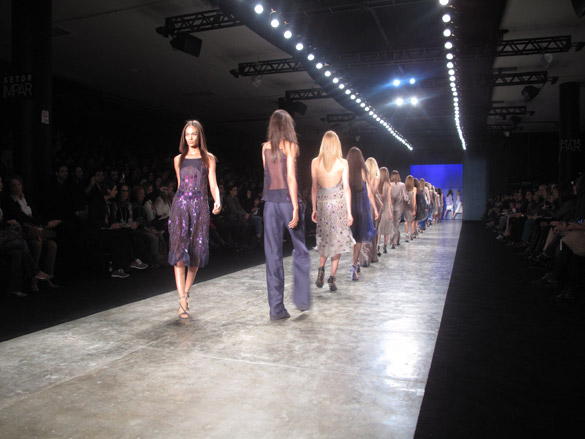
Animale
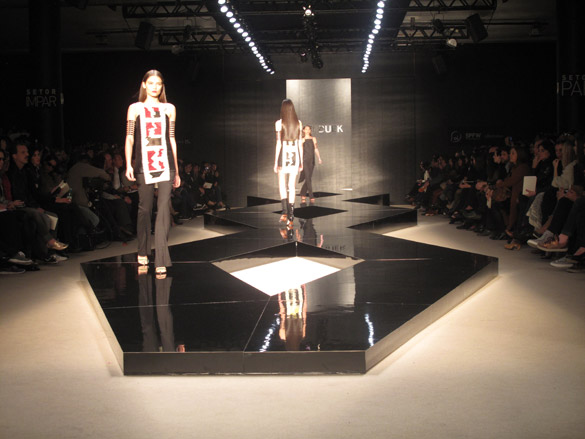
Tufi Duek
It was a graphic affair at Tufi Duek, and tribal influence was rife with the designer’s preoccupation with beading and arm-cuffs in almost every look. The attention to detail went beyond the surface too, with pleats of fabric blowing away to reveal contrasting colours beyond, while a nod to neon was hinted at in the subtle piping on certain dresses
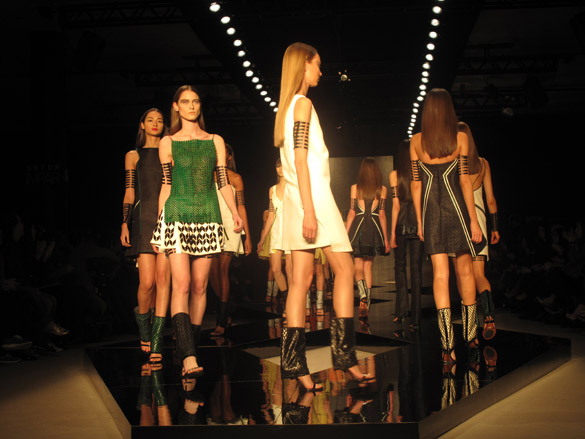
Tufi Duek
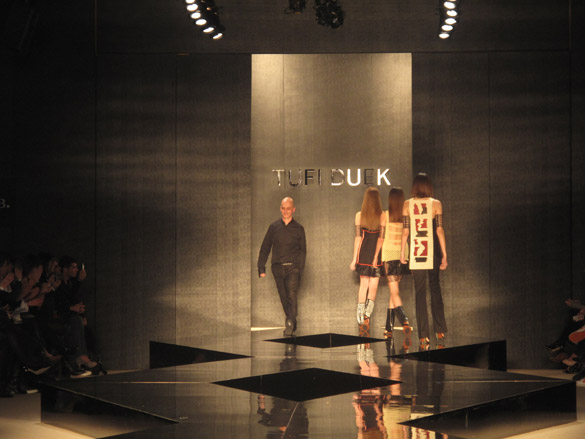
Tufi Duek
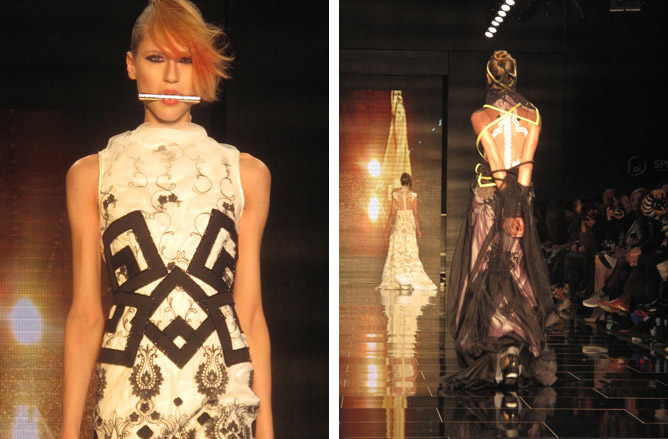
Samuel Cirnansck
Hinting at the duplicity of outfits, Ciransck’s love affair with skin-tight rubber, PVC, rope-filled Kinbaku-bi (Japanese bondage) references, and a recurring theme of silver mouth gags starkly contrasted the lacy dresses and ballgown eveningwear gear that they were upon closer inspection found to be constraining. Some girls even walked out in long dresses, swashing around to reveal hands that were tied behind their backs
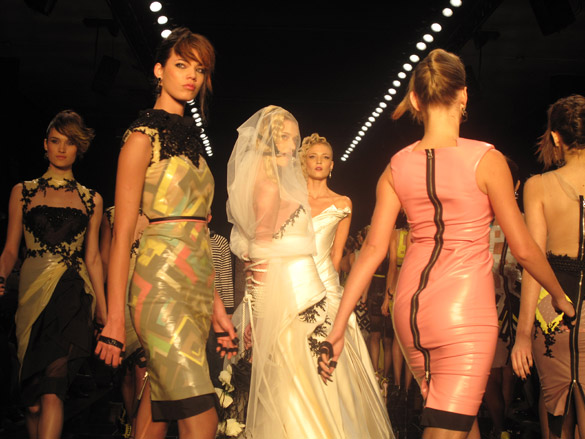
Samuel Cirnansck
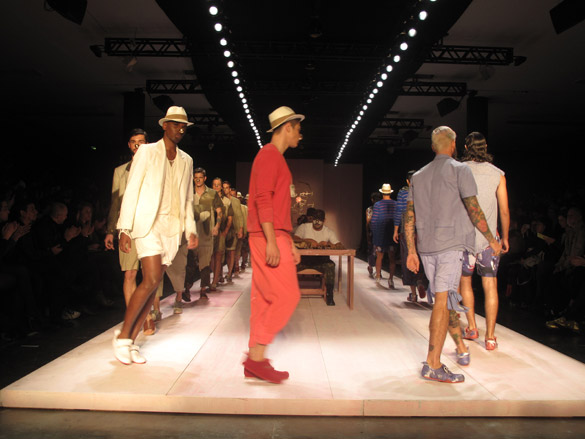
Reserva
If it wasn’t already obvious from the glow-in-the-dark portrait of Che Guevara that lit up a pre-show catwalk, the infectious high-tempo percussion soundtrack, or the beefy-looking soldiers seated in the middle of the catwalk who began writhing in military precision to the rolling of their cigars, it was definitely clear as outfits that played on slouchy, relaxed silhouettes swept over the show. This was one big tribute to Cuba summed up in 39 looks, one of which - a tailored white blazer and shorts combination - particularly stood out
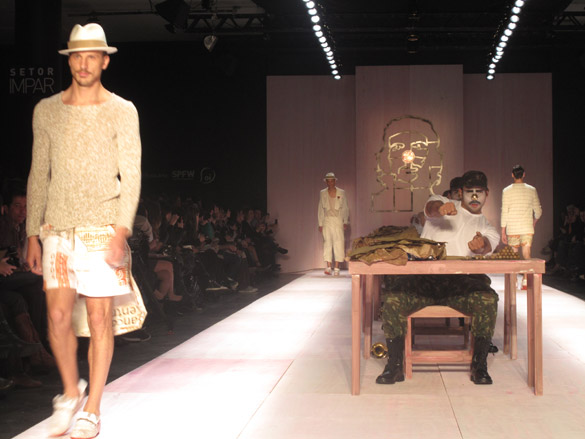
Reserva
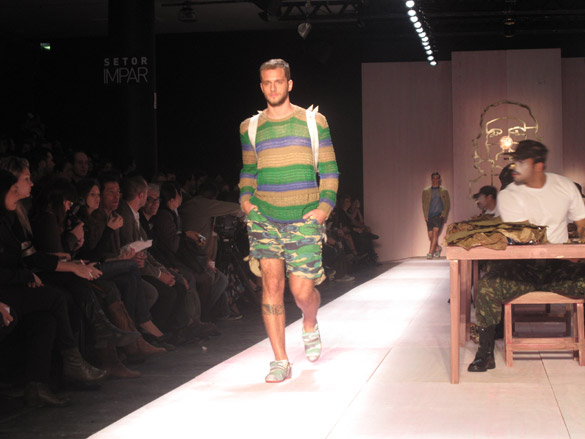
Reserva

One of many off-show lounges available to guests, the official fashion week lounge was where we refuelled our energies during the hour-long gaps between the shows

The bar area in the official fashion week lounge (usually packed to the rafters by about 7pm)
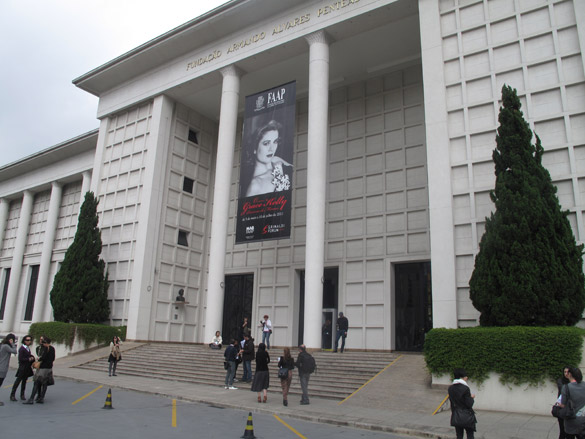
The first ’external’ off-site show of the week to take place away from the main venue, Reinaldo Lourenço’s show took place in the Fundação Armando Alvares Penteado, a historical building located in the Higienópolis district
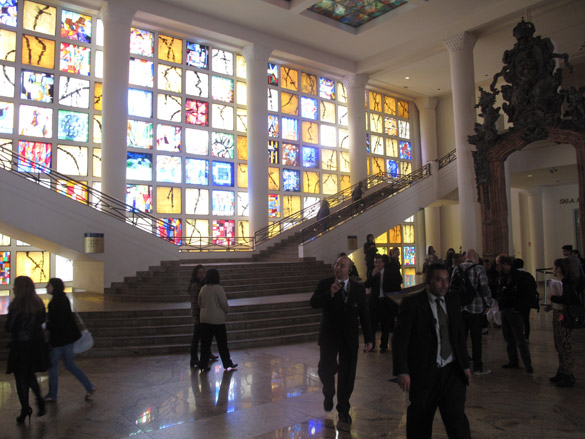
Inside the foyer of the building, with the entrance to Lourenço’s show on the right side...

... and the ’Grace Kelly, The Grace Kelly Years, Princess of Monaco’ exhibition on the left hand side
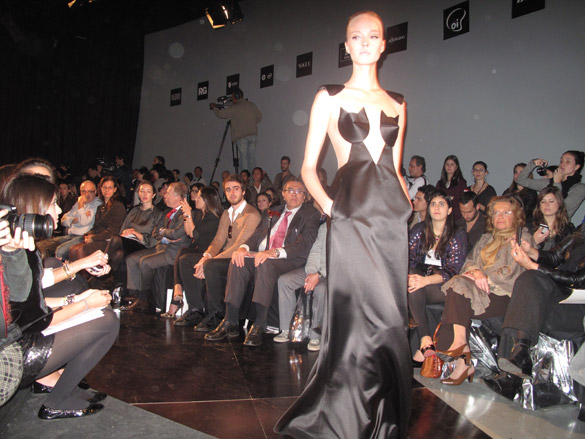
Reinaldo Lourenço
1/3 of Brazil’s very own fashion dynasty - Lourenço and Brazil’s mega fashion grande dame Gloria Coelho are parents to Eduardo Lourenço (who is making his name in the Paris fashion week circuit) - Lourenço senior’s Spring offering was a tribute to the late Elizabeth Taylor. Opening the show with a remixed version of ’Diamonds Are a Girl’s Best Friend’, the whole thing pointed clearly to hollywood glamour, reinforced by lashings of satin and an emphasis on tailoring and detail - especially seen on the exposed shoulder-pads, sheer dresses completely covered in intricate leather cut-outs, satin stripe and jewel-embellished skirts, and floral silk trousers
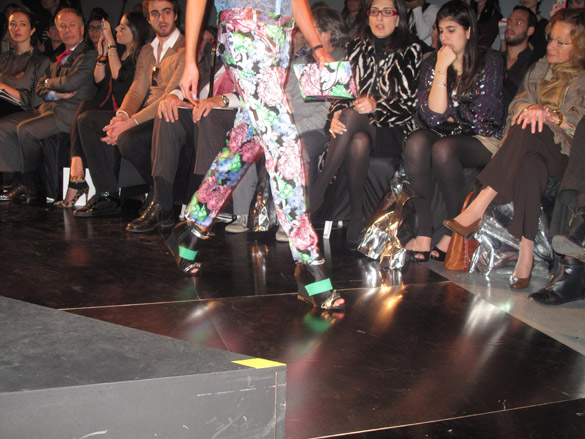
Reinaldo Lourenço
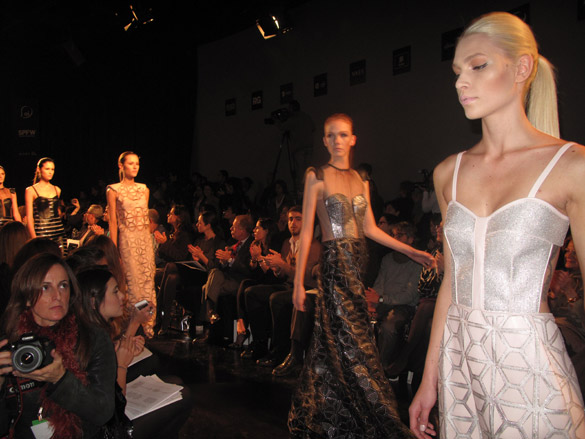
Reinaldo Lourenço
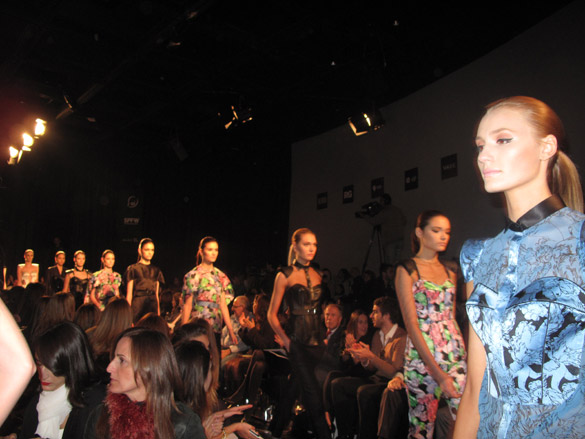
Reinaldo Lourenço

Reinaldo Lourenço

Movimento
Swimwear isn’t news for this country, but what’s always interesting is the way Brazilian brands play around with shape and pattern each season. For Movimento, this manifested itself in an exaggeration on hemlines proportions - there was a good variation on bikini bottoms - some high-waisted, others super-mini, which were paired with interesting weaving technique on bikini tops, and mixed in with delicate but bright printed resort wear, to satisfy all beach bum tastes
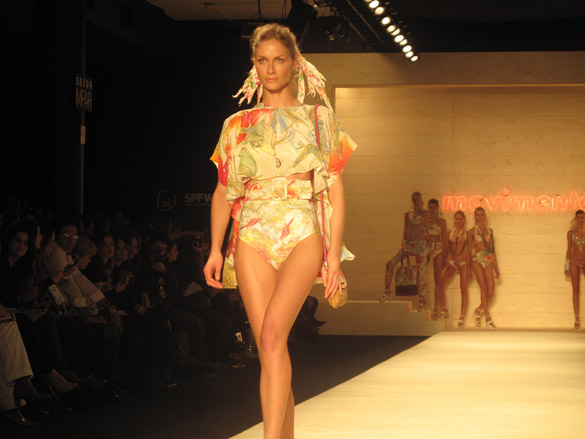
Movimento
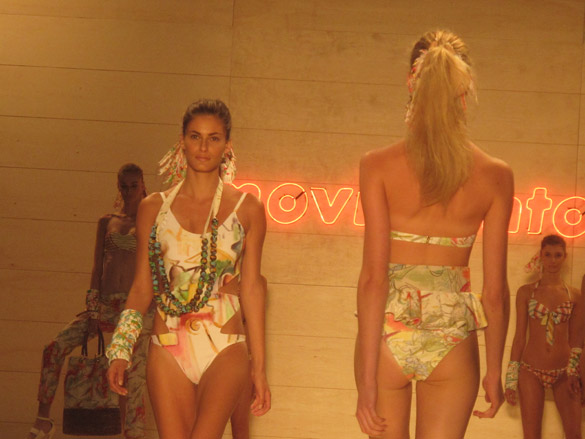
Movimento
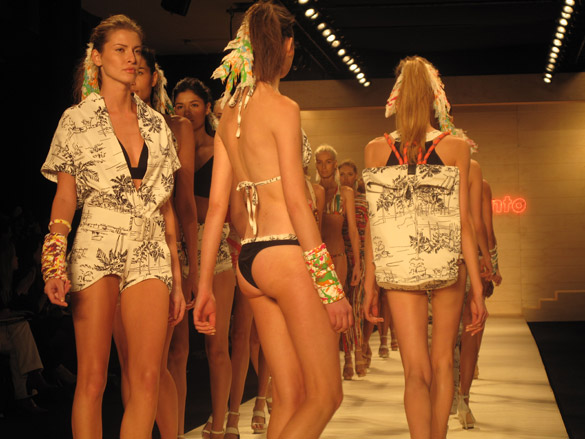
Movimento

Movimento

Alexandre Herchcovitch
One of the most anticipated of the season, Alexandre Herchcovitch’s show took on a 1960s summer holiday mood and won all-round. His muted pastel satin day dresses and summer outfits fused oriental influences with vintage colour tones, but never strayed away from his modern way of tailoring - we loved the subtly enhanced shoulder silhouette, paired with pleated cinched waits, on some of the dresses

Alexandre Herchcovitch
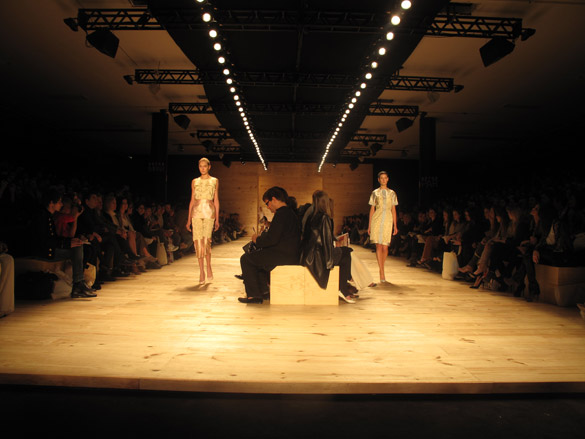
Alexandre Herchcovitch
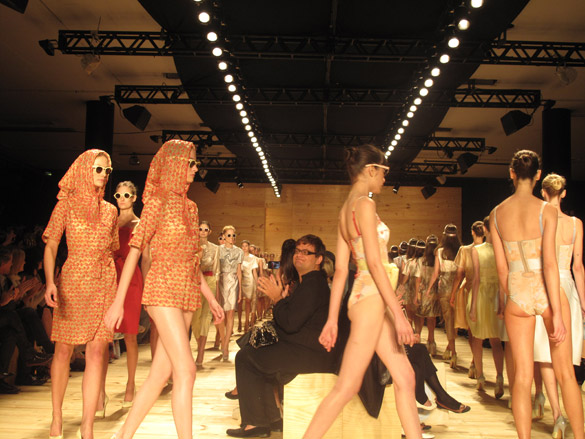
Alexandre Herchcovitch
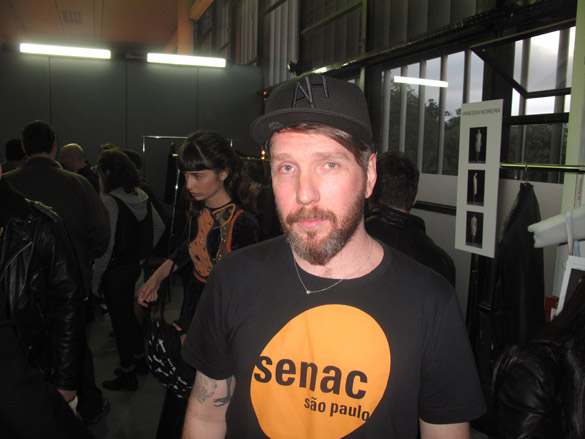
A pleased Alexandre Herchcovitch backstage after his show
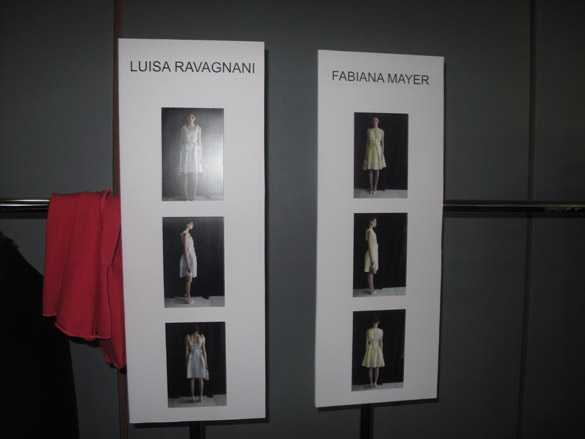
A peek at one of the Alexandre Herchcovitch looks backstage
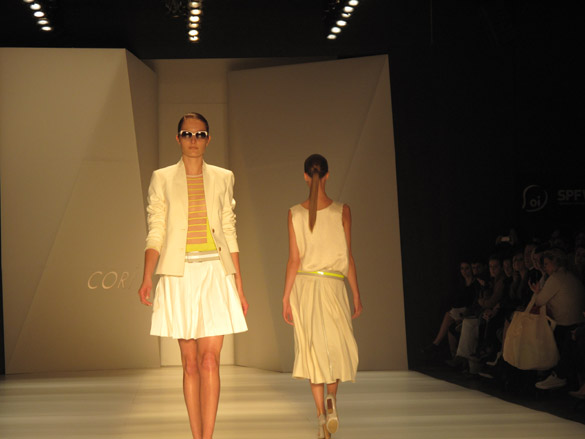
Cori
It was a retail-focused collection at Cori - clean minimal lines were key here, as were the loosely-fitted blazers that were paired with colour-block silks. Hinting at the sporty aesthetic that was awash on the catwalk this season, girls came out accessorized in visors, while some outfits with high-gloss finish made them seem almost as if they had been freshly dipped in water. Interestingly there was a residual trace of last season’s collection with the shiny leather detailing that was delicately stitched into fabrics, while some shirts and trousers had a rubberized finish
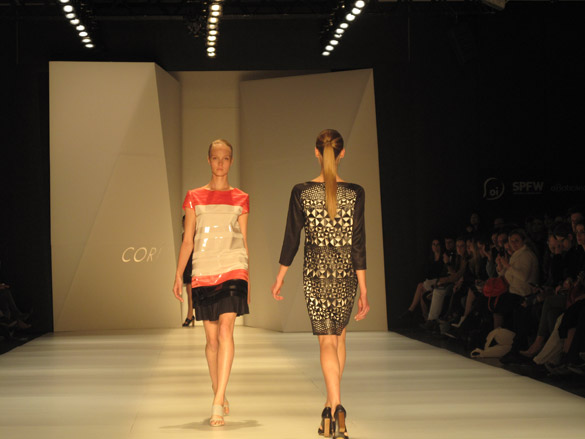
Cori
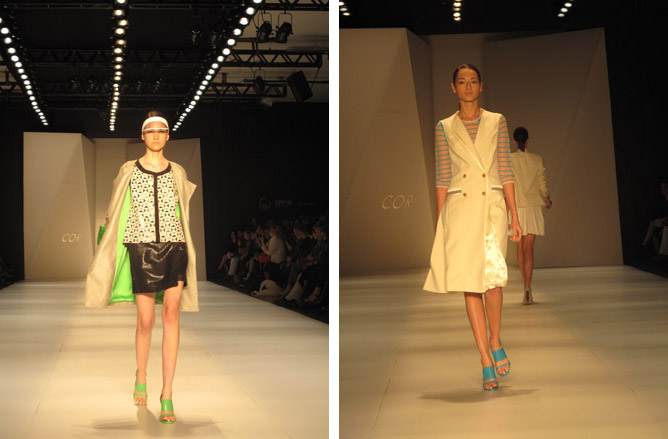
Cori
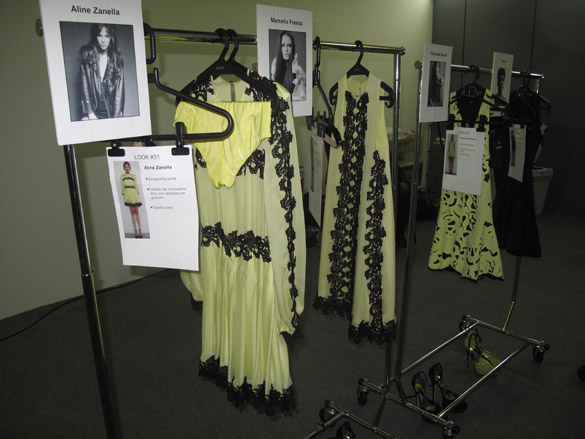
A pre-show preview of the new Iódice collection backstage before the show

Marcos Proença, Brazil’s hair and makeup guru, briefs the team on the hairstyles for Iódice
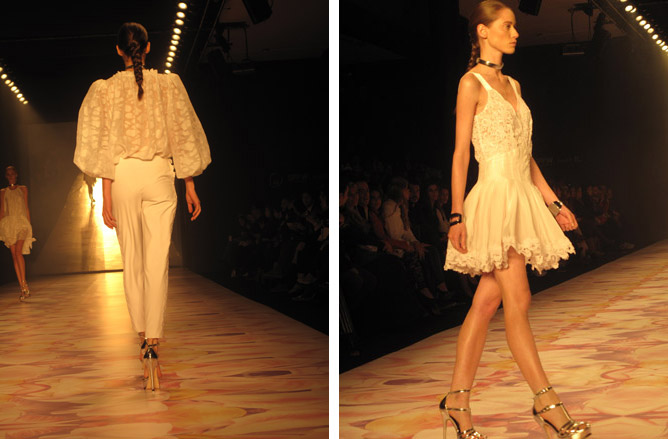
Iódice
Valdemar Iódice told us backstage that his collection was all about spring and the ’the rebirth of the clothes and the patterns’. Inspired by the flora and fauna of springtime, Iódice played with the colour and shape of dresses to resemble his flower of choice, the tulip. The collection started with 12 completely white outfits, transistioning into bright floral print and finally flourescent lime mini dresses fringed with black embroidered detailing
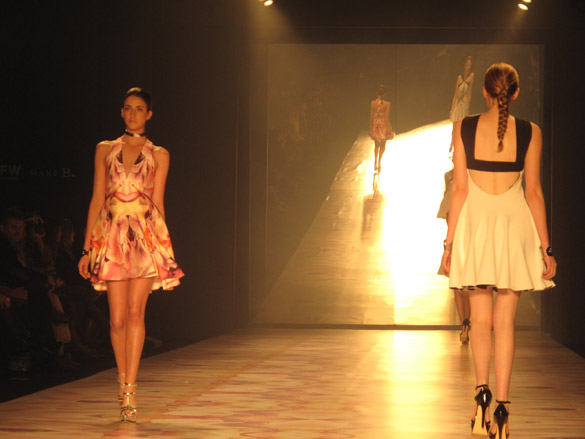
Iódice
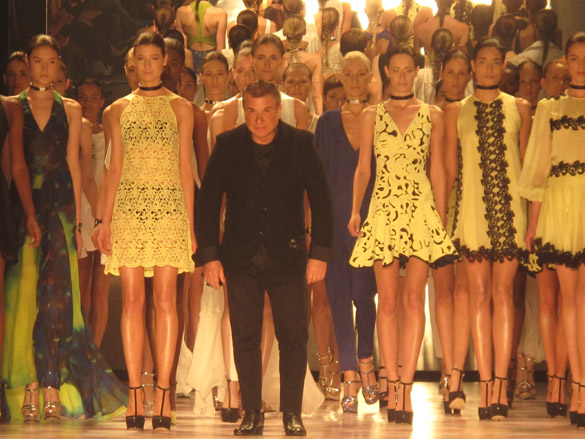
Valdemar Iódice takes a bow, and channels the 1990s catwalk aesthetic with his entourage of models

Jefferson Kulig
Playing heavily on the idea of luxe-sportswear, the collection had a predominantly minimalist asymmetric silhouette that was heavily embellished with tribal crochet and fringing detail. Referencing another trend for this season, there was a big focus on silk and print-infused pieces. Also noteworthy, were the detailed leather warrior women shoes, and some interesting cut-out leather waistcoats that gave the collection an edge
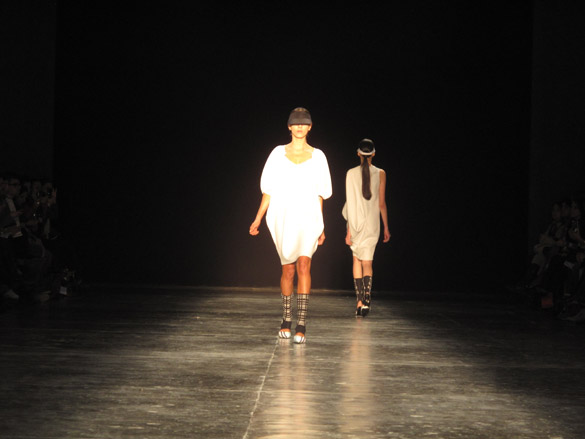
Jefferson Kulig

Jefferson Kulig
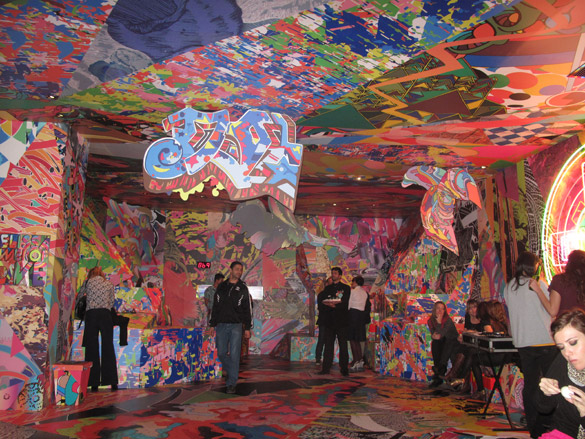
Inside the psychedelic Melissa lounge
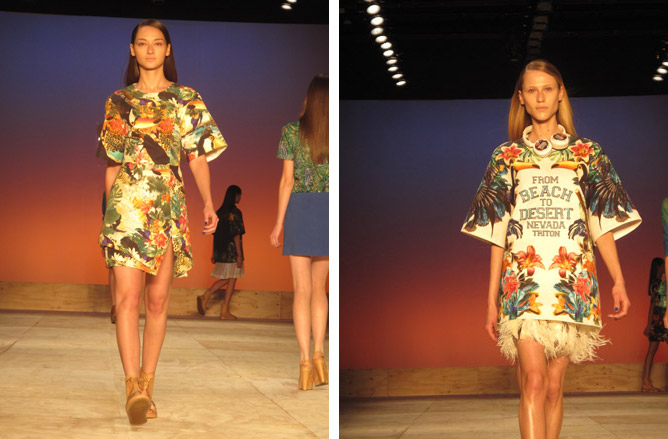
Triton
Triton is a young person’s brand, so it was not surprising the whole collection was infused with a colour-pop of print and bright fringing on hemlines. Walking out to a sunset backdrop, Triton’s girls paired bold structured oversized dresses with bursts of tropical print - a nod no doubt to the country’s rich architectural heritage, but also to its abundance of sun, sea and tropical foliage

Triton
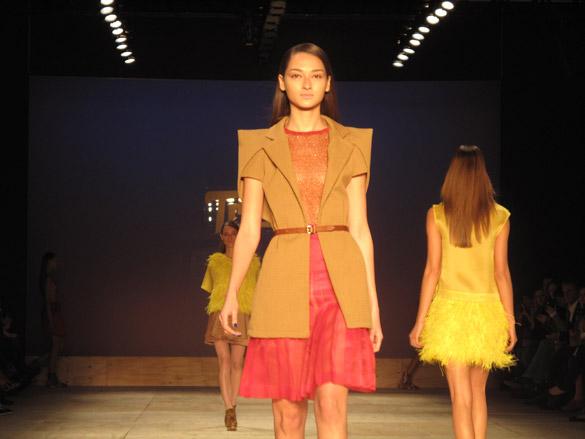
Triton

A view of the flying-saucer-shaped Planetarium - located on the other side of Ibirapuera Park - which was temporary home to the Cavalera show
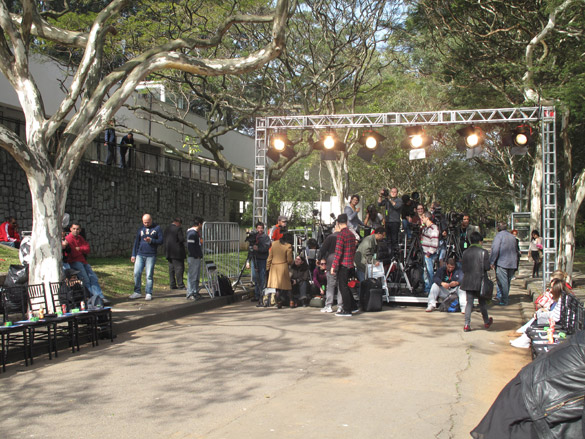
Photographers at the ready - the outdoor Cavalera catwalk space adjacent to the Planetarium
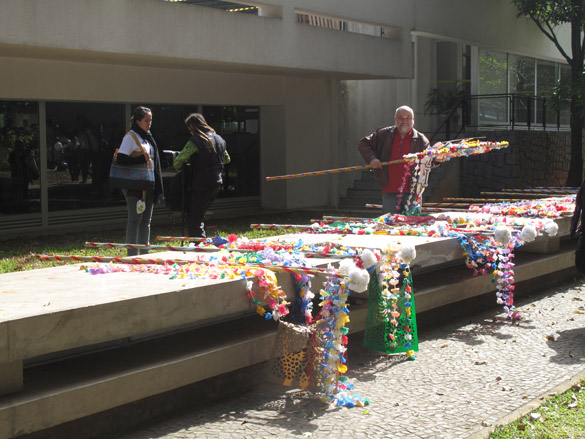
Props ’backstage’ at Cavalera

Cavalera
There was no missing the ’Day of the Dead’ fiesta that Cavalera was plugging for its Spring collection. The annual Mexican (and Brazilian) festival that honours the dead was evident all over the tribal folk clothing, brought to life by creative director Alberto Hiar, who was imagining ’Frida Kahlo celebrating “Dia dos Mortos” while listening to Janis Joplin’ in his design process. Flanked by a flag-bearing pocession of tattooed Mexican Lucha Libre fighters, Cavalera girls and boys strode out in pieces like blazers embroidered with flowers, colourful crocheted hotpants, shirts with distressed fringing and a overall base of sheer fabrics in whites and blacks that were then sharply contrasted with bright colour prints beneath.

Cavelera
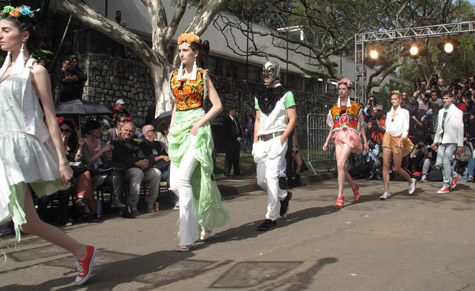
Cavalera

Goria Coelho’s show space on the roof of Shopping Iguatemi mall, where she tends to hold her shows
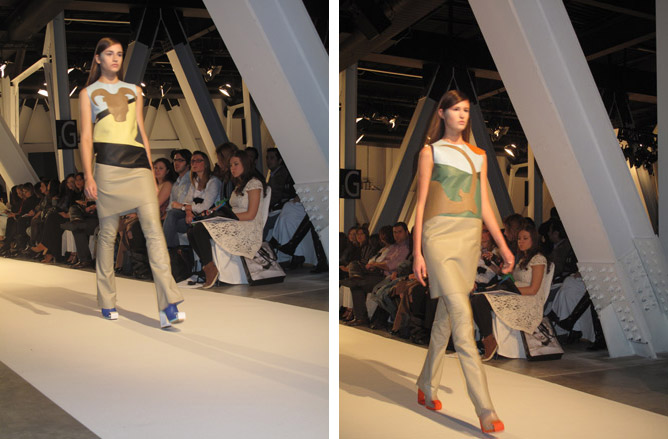
Goria Coelho
Coelho’s show notes referenced everything from X-Men and Pokemon colours, to what she termed ’spiritual psychedelic’. The mysteries of the universe - or astrological happenings - were explored in abstract application with things like the slate and sand colour palette that moved into shiny stone black (that resembled outer space planet rocks) and finally into molten patent leather mini dresses in black, nude and bright red. A brilliantly-edited selection of leather looks held up not only for their great colour pairing, but also their detailed finishes, such as the cellophane-like textures on dresses
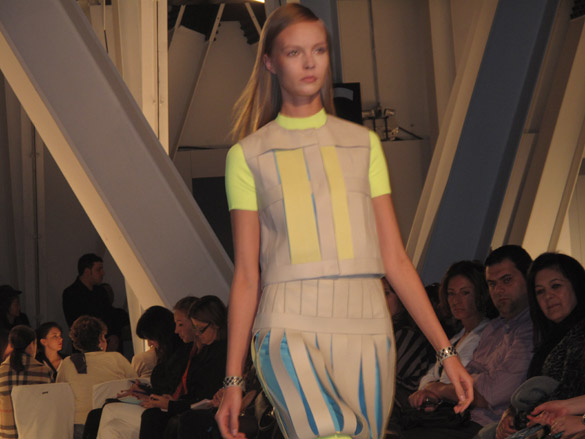
Goria Coelho
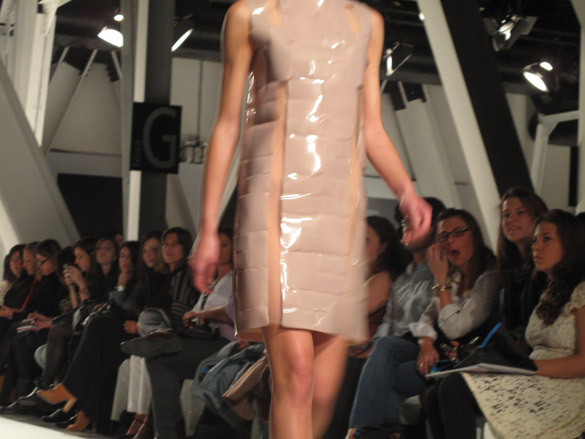
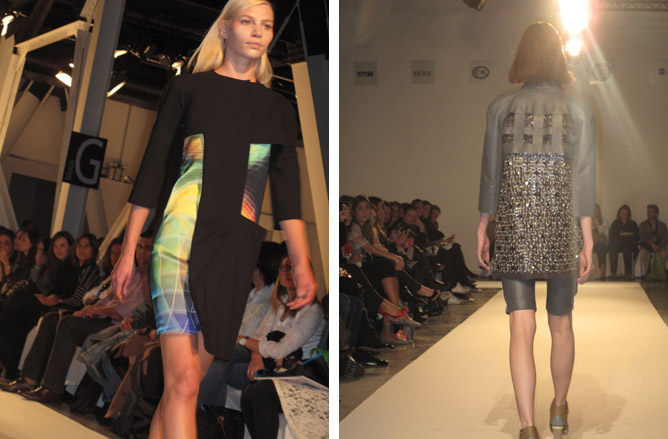
Goria Coelho

Goria Coelho

Away from the main catwalk spaces but parked right in the middle of the Biennial Foundation building’s lobby floors, Inez Van Lamsweerde and Vinoodh Matadin brought their ’Pretty Much Everything’ retrospective exhibition to the São Paulo fashion crowd

Inez Van Lamsweerde and Vinoodh Matadin

’Pretty Much Everything’ by Inez Van Lamsweerde and Vinoodh Matadin

’Pretty Much Everything’ by Inez Van Lamsweerde and Vinoodh Matadin
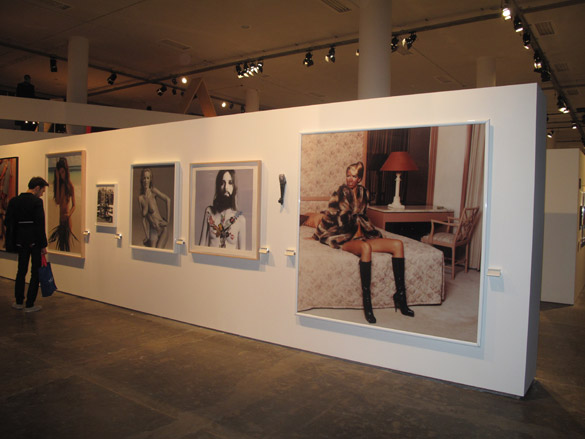
’Pretty Much Everything’ by Inez Van Lamsweerde and Vinoodh Matadin
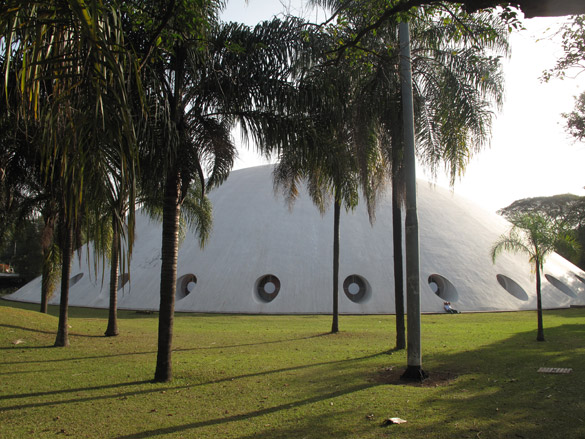
Across the road from the fashion week space, the inaugural Design São Paulo week took place in another classic Oscar Niemeyer building within Ibirapuera Park - the OCA exhibition pavilion
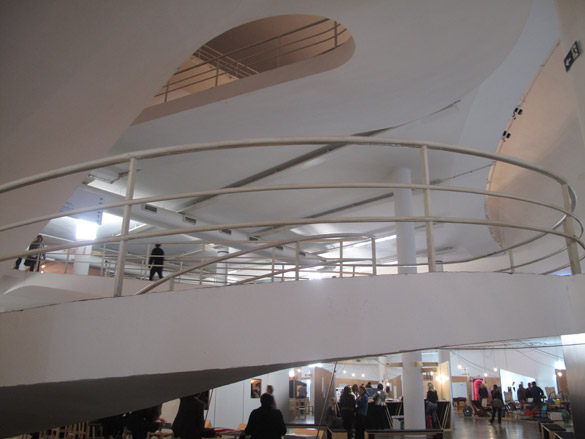
Spread over four floors, Design São Paulo utilised Niemeyer’s 8,000sqm space to host a range of gallery exhibitions, pop-up shops, and workshop and conference spaces

Conceptualised by architect Marco Brajovic, the idea of isolated exhibition spaces was enhanced by windows that were built into the wooden panels surrounding each stand, allowing the pieces to show themselves from a variety of angles
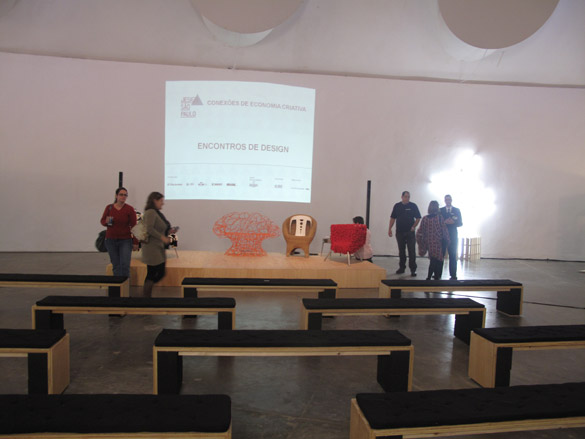
One of the talk spaces within the Biennial pavilion
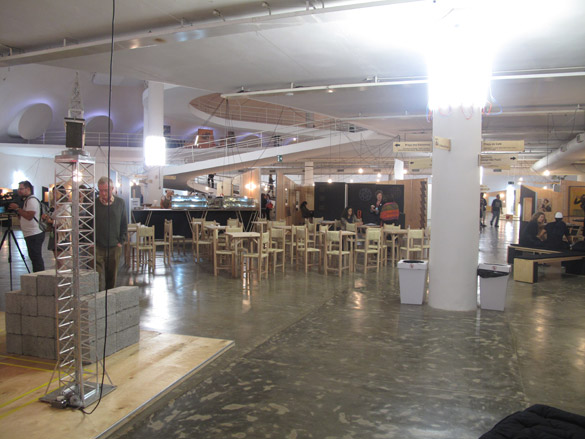
A view of the basement floor, an expansive space in which design art exhibits were put on show by various galleries, most of which are Brazil-based...
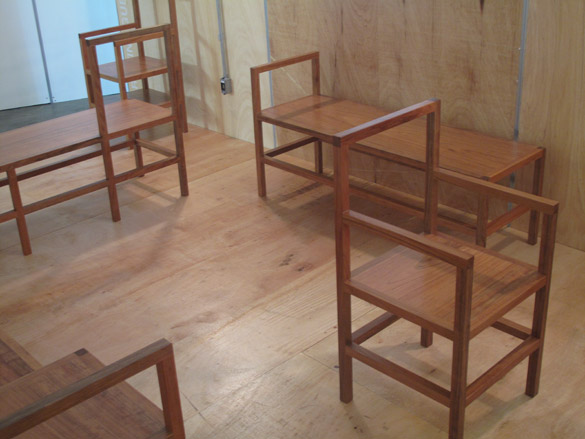
... with the exception of Portuguese gallery Cristina Guerra Contemporary Art

The Lisbon-based gallery showcased a series of wooden furniture by Miguel Rios design, which was inspired by an optical illusion of a wooden chair, viewed from a tiny pin-hole in this structure

The entrance way to Design São Paulo...

... which leads into an efficiently-placed accreditation reception area
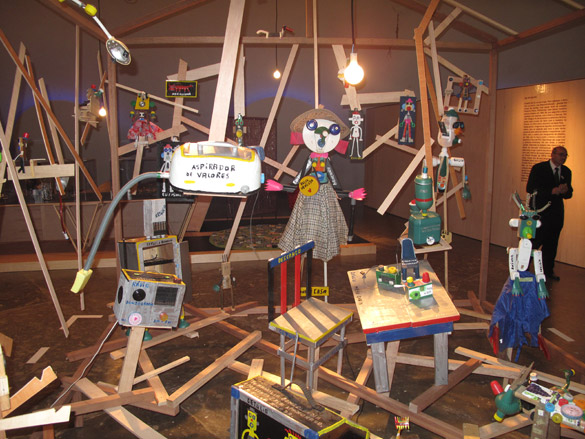
The use of materials has always been key to design in Brazil - this Irmaos Camapana installation, which used material produced by plastic artist Getulio Damado, greeted visitors in the lobby of Design São Paulo
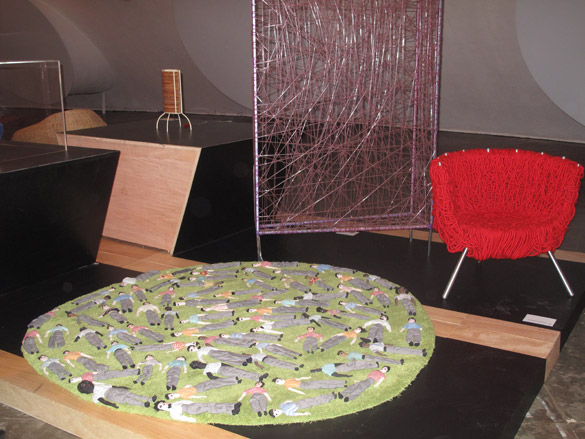
Named this year’s Designers of the Year, the Campana brothers’ work was dispayed in an exhibtion on the ground floor. Pictured here clockwise from bottom: ’Tapete Circus’, 2010, for Nodus; ’Biombo Zig Zag’, 1995; and ’Poltrona Vermelha’, 1998 for Edra
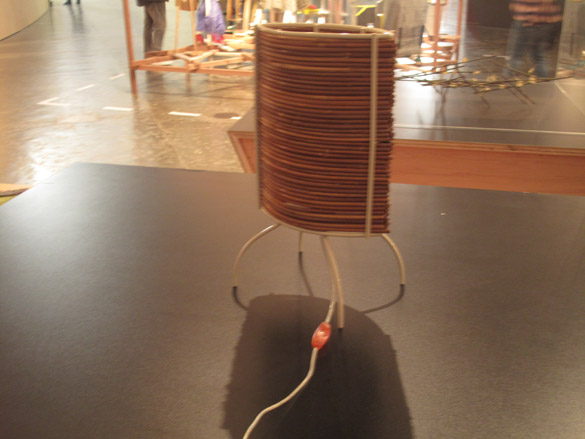
’Luminara Bambu’, 2000, by the Campana brothers

’Corallo chair’, 2003/04 by the Campana brothers, manufactured by Edra
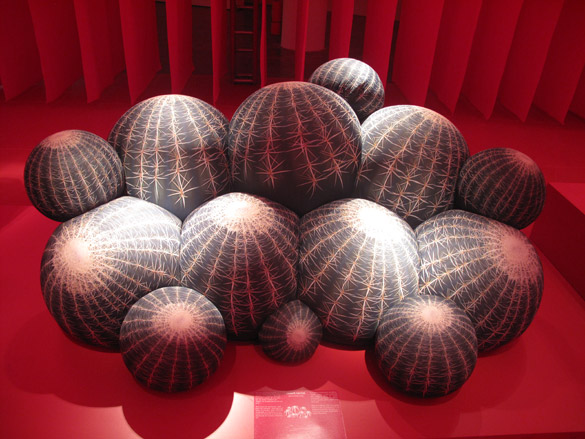
’Canape Cactus’, 2011 designed by Maurizio Galante and made by Cerruti Baleri
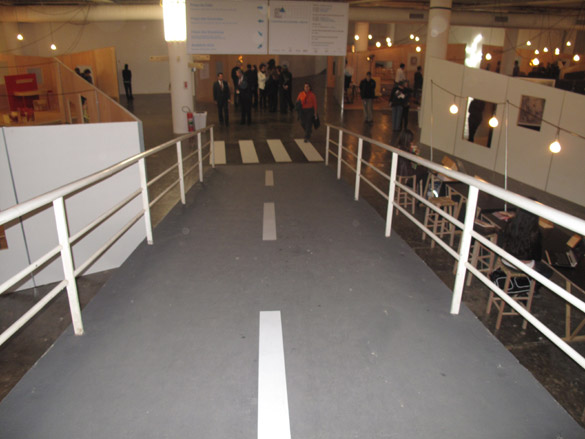
Niemeyer’s ramp system, which lead visitors down to the gallery spaces in the basement, were lined to look like roads for the salon

A colourful spread of vintage children’s chairs at Artemobilia Galeria
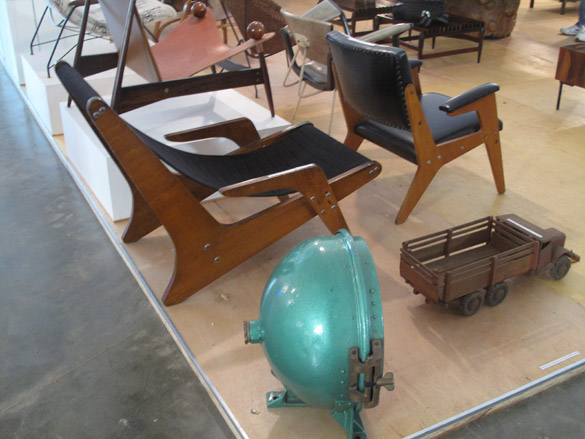
Artemobilia Galeria

The Mendes Wood stand. The company create pieces that mix together art and design. The bookshelf is a newly-produced pice, designed especially for design week - Jatobá wanted to challenge designers and artists to create pieces that didn’t fall into the ’art’ or ’furniture’ category, but rather design art in its own right
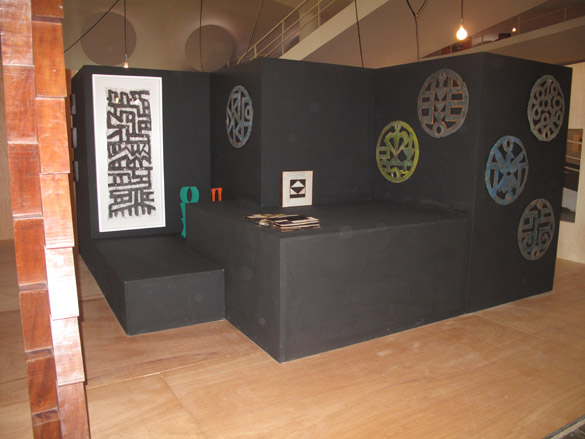
Galeria Coleção de Arte’s exhibition stand
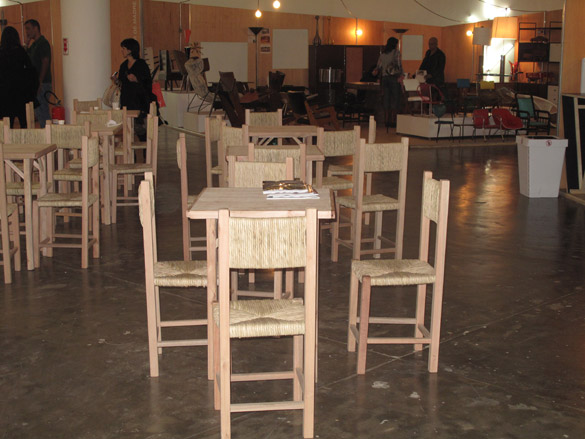
The cafe area in the basement

Baro + Coletivo Amor de Madre

Even the signage keeps in line with the Design São Paulo identity
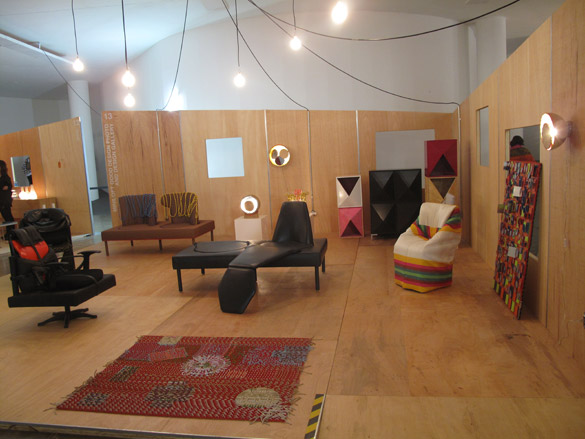
Miniloft Good Design Photo and Design Gallery
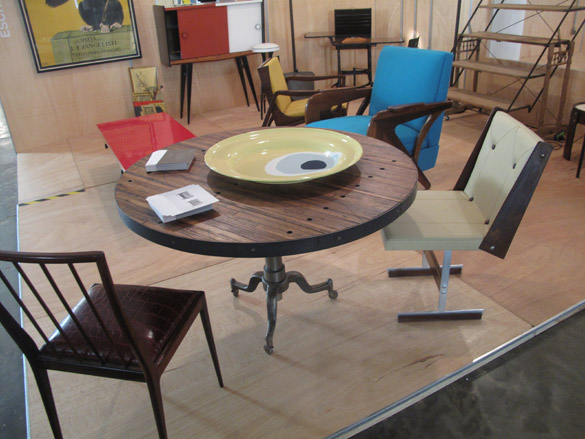
Thomas Saavedra Escritório de Arte

Objects from Galeria Luisa Strina, arguably one of the most respected galleries in São Paulo

Galeria Luisa Strina

Wanting to modernise the way vintage pieces are show, Marco Sancovsky’s São Paulo art store Arterix showcased these Sergio Rodrigues pieces on modern plinths

Arterix - Marco Sancovsky

Jewellery company Aria Joalheiros invited artist and designer Rodrigo Almeida to create some directional pieces for the salon...
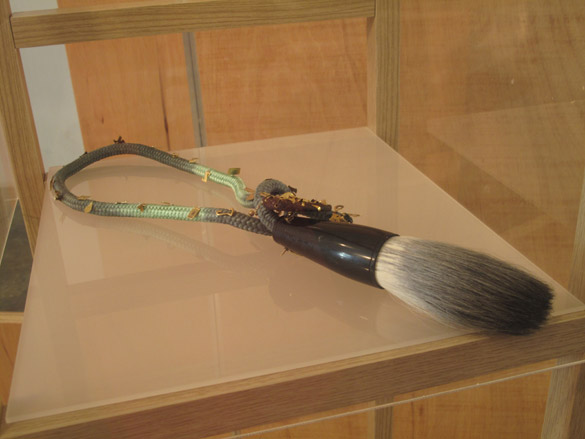
... like this limited-edition necklace, which looks heavy, but is surprisingly lightweight

Hugo Franca’s chair for Modernariato Bruno Musatti gallery. Franca is known for using the medium of tree trunks in his work
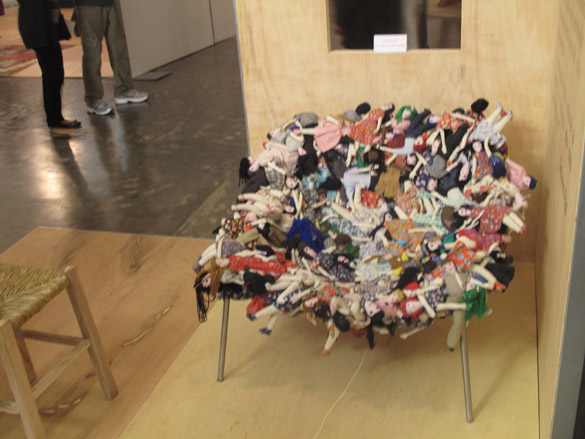
Prooving that design can be educational not only through lectures, this Campana-brothers-designed chair for Artesol aims to promote the development of traditional handicraft in Brazil
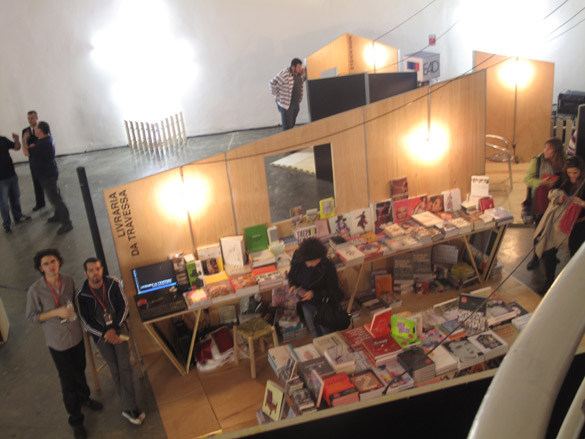
View of the bookshop in the basement

The Doïz stand
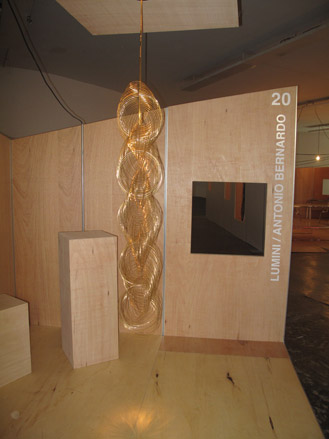
Lamp by Antonio Bernardo for Lumini
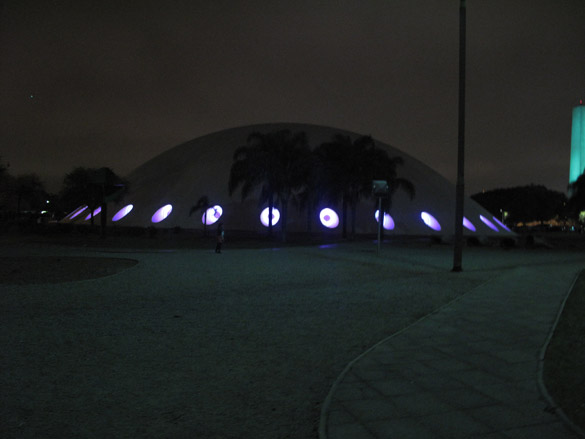
The OCA’s ring of porthole windows lighting up the night sky
-
 Terrified to get inked? This inviting Brooklyn tattoo parlour is for people who are 'a little bit nervous'
Terrified to get inked? This inviting Brooklyn tattoo parlour is for people who are 'a little bit nervous'With minty-green walls and an option to 'call mom', Tiny Zaps' Williamsburg location was designed to tame jitters
-
 Let’s hear it for the Chopard L.U.C Grand Strike chiming watch
Let’s hear it for the Chopard L.U.C Grand Strike chiming watchThe Swiss watchmaker’s most complicated timepiece to date features an innovative approach to producing a crystal-clear sound
-
 Form... and flavour? The best design-led restaurant debuts of 2025
Form... and flavour? The best design-led restaurant debuts of 2025A Wallpaper* edit of the restaurant interiors that shaped how we ate, gathered and lingered this year